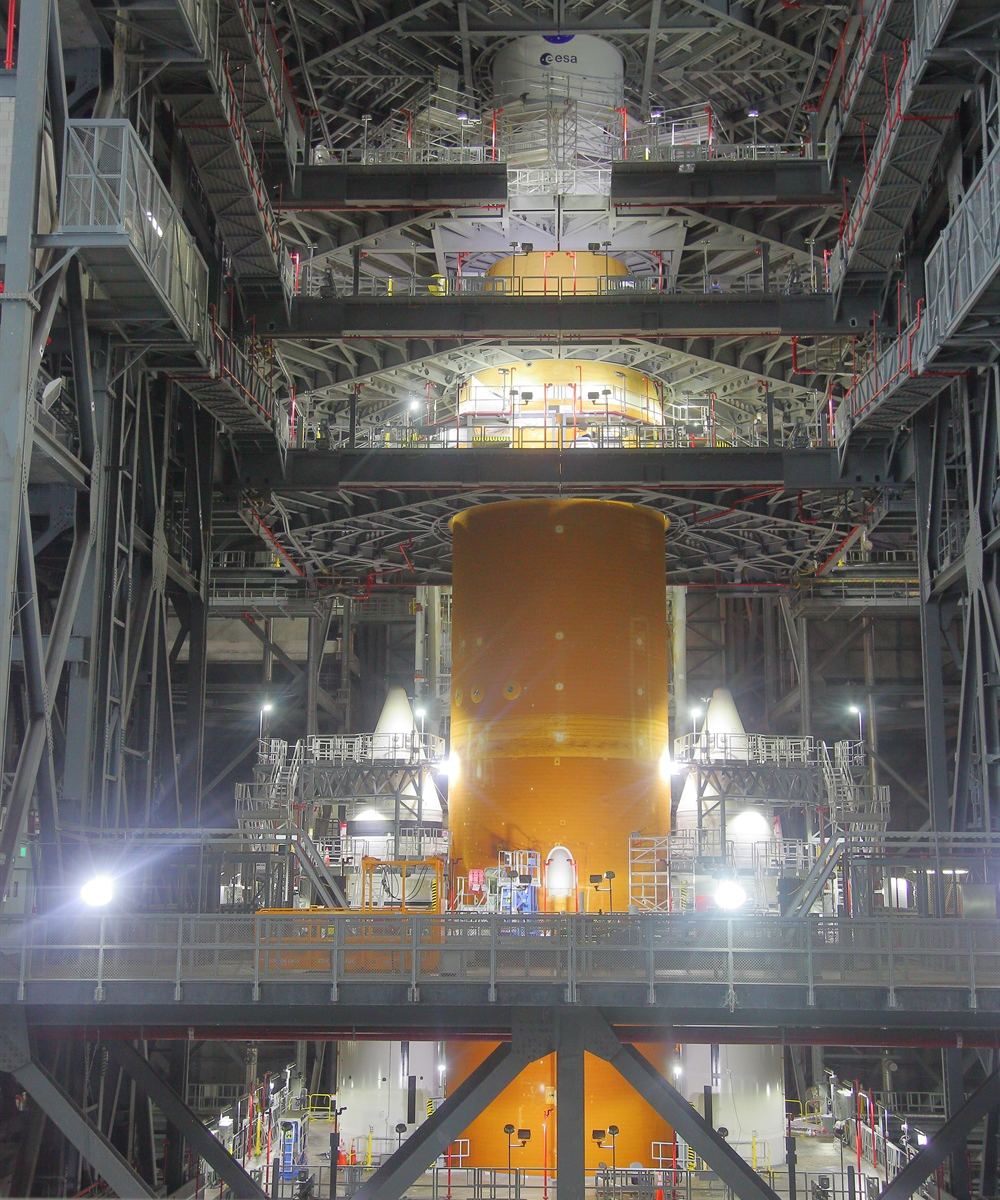Every journey begins with a single step, and the first step of NASA’s return to the Moon begins with a four-mile rollout to the launchpad. NASA announced their target date for rolling out the Space Launch System rocket for the four-mile crawl to the launch pad is March 17. The full rocket stack will spend about a month at the pad undergoing several tests before heading back to the Vehicle Assembly Building. If all goes well with the tests, NASA hopes to launch its uncrewed Artemis test flight, likely by early summer.
Mike Bolger, the Exploration Ground Systems program manager at Kennedy Space Center, said the rollout will begin at 6 pm Eastern Time. It will take about an hour for the vehicle and its mobile launch tower to move out of the VAB on a giant crawler-transporter vehicle, then an 11-hour trip to the pad.
“The crawler transporter will use a range of speeds,” Bolger said in a call with reporters, “from .1 mph to .82 mph. The slower speeds are for departing the VAB and the ‘higher’ speed is the cruising speed, so to speak.”

The last time a vehicle capable of carrying a crew rolled out from the VAB was in 2011 for the final flight of the Space Shuttle program. Bolger said that while space shuttle rollouts usually began at midnight, they wanted to start this rollout earlier so that everyone could be part of it, including KSC workers and their families as well as the media.
“The crawler transporter will be carrying this 17 million pound stack,” Bolger said, “and the top of the umbilical will be about 400 feet off the ground, so it will really be a sight.”

The main goal of the test on the launchpad will be the “wet dress” rehearsal, which includes filling the core stage fuel tanks with liquid hydrogen and liquid oxygen propellants and then going through a practice countdown that will stop at T-9.34 seconds, just before the core stage’s four RS-25 engines would ignite during an actual launch.
As far as the time-frame for the launch of the test flight, Tom Whitmeyer, NASA’s deputy associate administrator for exploration systems development, said the agency is waiting to see how the wet dress rehearsal goes, and they will set the date after that.

“It is a complicated test,” he said, “and we will continue to evaluate the May window but also recognize there is a lot of work ahead of us and we need to get through that before we set the date.”
The May launch window runs from May 7 to 21. Future launch windows are June 6 to 16, and June 29 to July 12, with a “cutout” of July 2 to 4 when a launch would not be workable. The launch windows take into account being able to splashdown during daylight hours and anticipates the best hours for the tests they want to accomplish.
Asked about any potential complications due to Russia’s invasion of Ukraine and how that may affect SLS or operations on the International Space Station Whitmeyer said he could not comment on ISS operations, but he did not know of any components of the SLS or Orion capsule that come from Russia or Ukraine. He added that a lot of the vehicle’s hardware has shuttle-derived heritage, and the only non-US major component is the Orion service module, which was built by the European Space Agnecy. Ten European countries were involved in the development of the European Service Module, with input from 26 European companies
Lead image caption: The stack of the Space Launch System rocket in the Vehicle Assembly Building at Kennedy Space Center. Credit and copyright: Alan Walters, for Universe Today.

